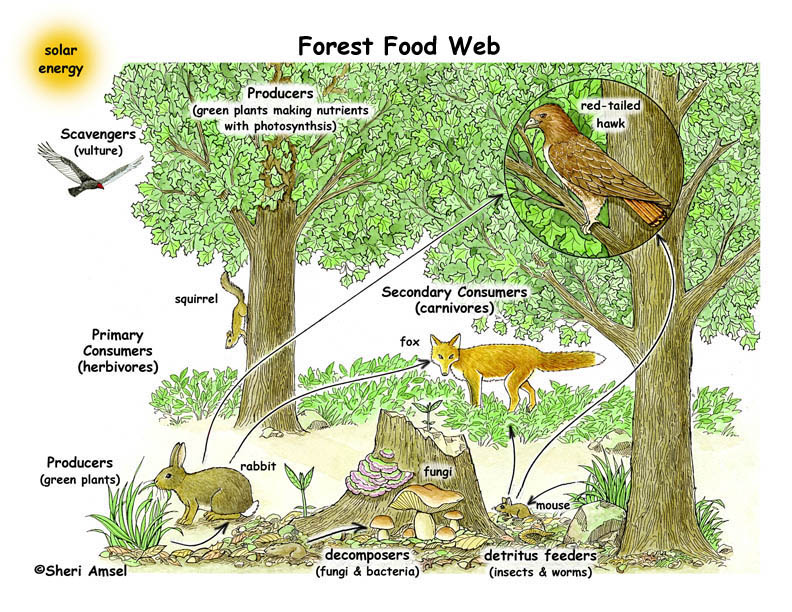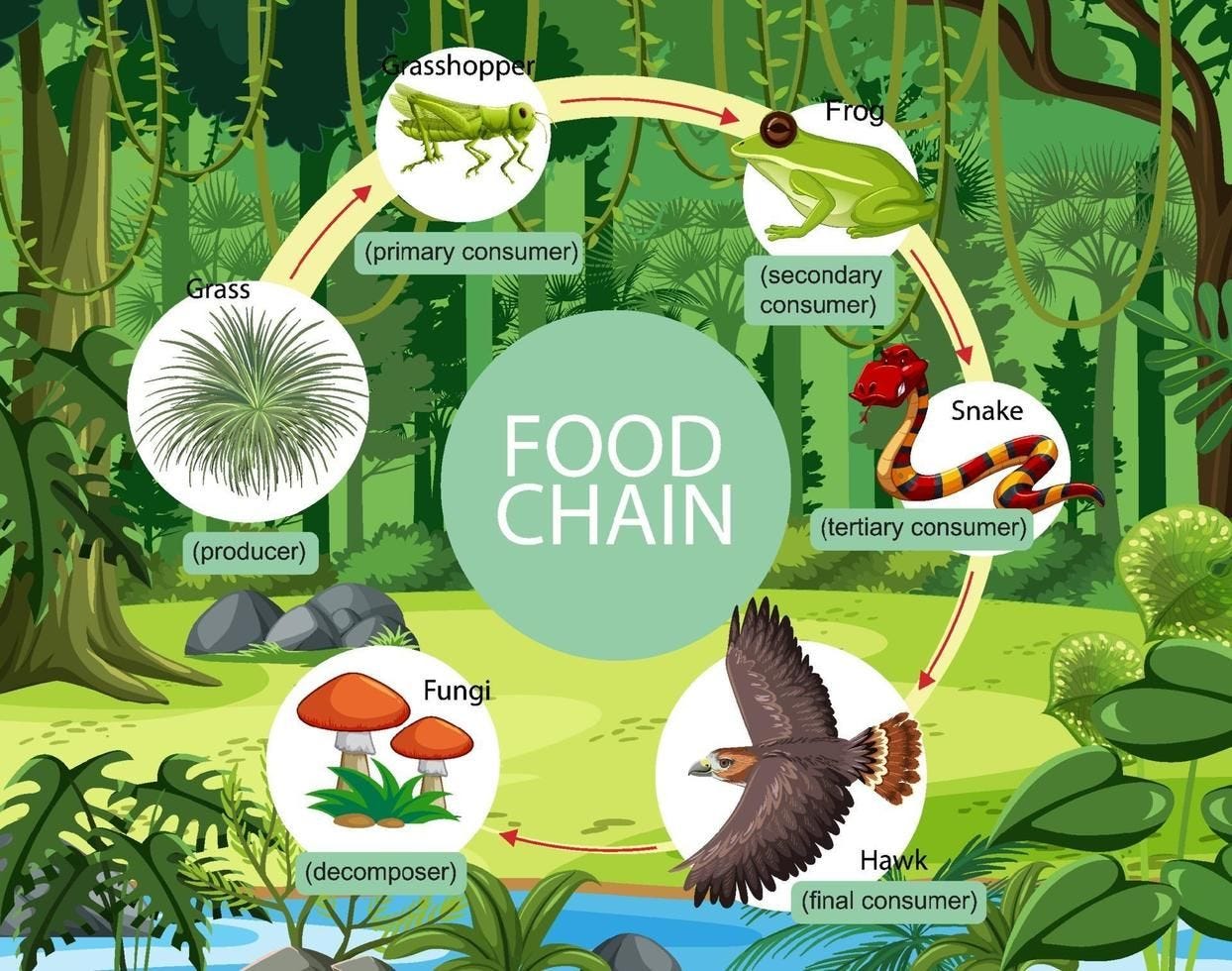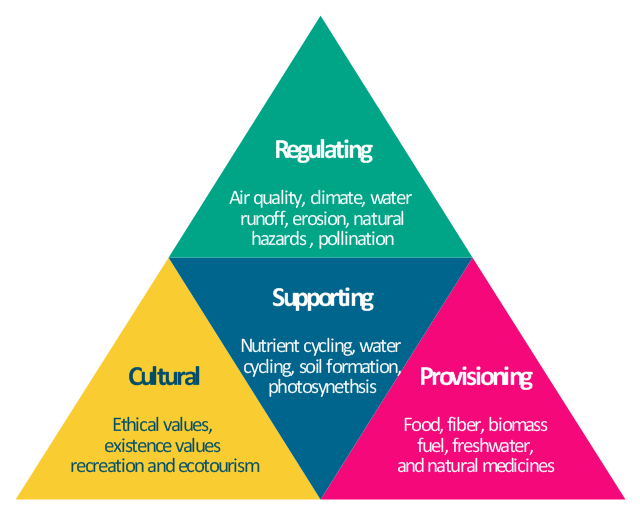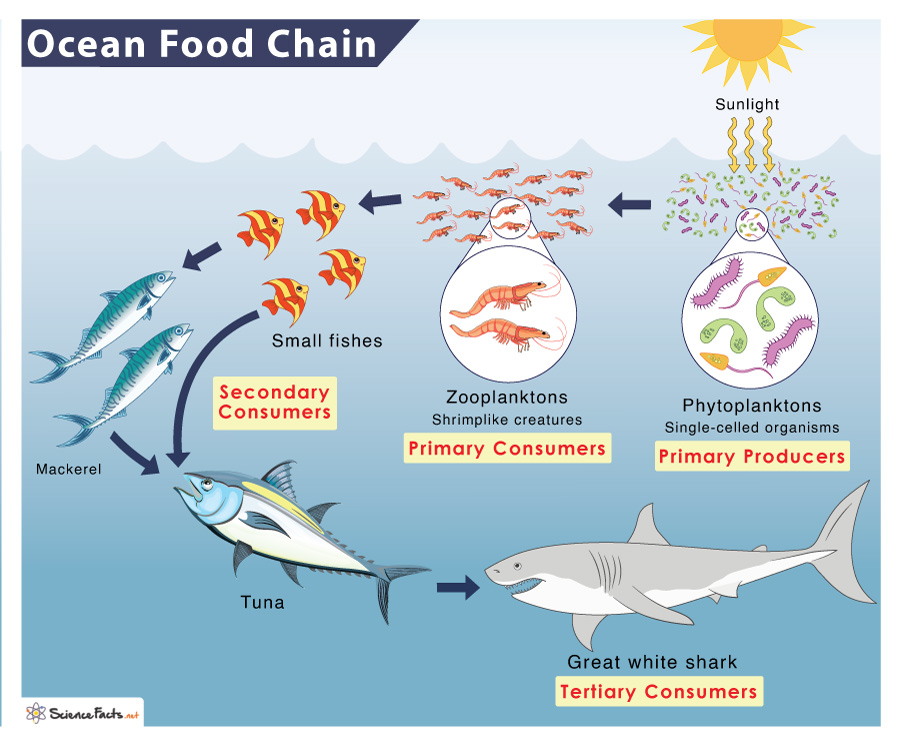Topic ecosystem in forest: Explore the vibrant heart of nature through "Ecosystem in Forest," where the intricate balance of life unveils the secrets of biodiversity and sustainability in our planet"s green lungs.
Table of Content
- What are the components of an ecosystem in a forest?
- Overview of Forest Ecosystems
- Types of Forest Ecosystems
- Flora and Fauna in Forest Ecosystems
- Role of Forests in Climate Regulation and Carbon Sequestration
- Water Cycle and Soil Stabilization
- Biodiversity and Conservation Efforts
- YOUTUBE: Understanding Forest Ecosystems
- Human Impact and Sustainable Management Practices
- Emerging Challenges: Climate Change and Deforestation
- Case Studies: Successful Forest Restoration Projects
- Future of Forest Ecosystems: Research and Trends
What are the components of an ecosystem in a forest?
An ecosystem in a forest consists of various components, which work together to maintain the balance and harmony within the environment. The components of a forest ecosystem can be categorized as follows:
- 1. Abiotic Factors: These include non-living elements of the ecosystem that play a crucial role in shaping the environment and influencing the organisms within it. Some examples of abiotic factors in a forest ecosystem are:
- Soil composition
- Climate
- Temperature
- Rainfall
- Sunlight
- Water availability
- 2. Producers: These are the organisms that can produce their own food through photosynthesis. In a forest ecosystem, the main producers are:
- Trees
- Plants
- Mosses
- Ferns
- 3. Consumers: Consumers are organisms that obtain energy by consuming other organisms. They can be further classified into different levels based on their feeding habits:
- Primary consumers (herbivores): These animals feed directly on the producers. Examples include deer, rabbits, and insects.
- Secondary consumers (carnivores): These animals prey on herbivores. Examples include wolves, foxes, and snakes.
- Tertiary consumers (top predators): These are the apex predators that feed on other carnivores. Examples include apex predators like bears and eagles.
- 4. Decomposers: Decomposers play a crucial role in breaking down dead organic matter and recycling nutrients back into the ecosystem. They include:
- Bacteria
- Fungi
- Worms
- Detritivores (such as beetles and ants)
- 5. Interactions: The components of a forest ecosystem interact with each other in various ways, forming complex relationships. Some of these interactions include:
- Predator-prey relationships
- Competition for resources
- Symbiotic relationships (mutualism, commensalism, and parasitism)
- Pollination by insects or birds
- Seed dispersal by animals
In summary, the components of a forest ecosystem include abiotic factors, producers, consumers, decomposers, and the various interactions that occur between them. These components work together to create a balanced and biodiverse environment within the forest.
READ MORE:
Overview of Forest Ecosystems
Forest ecosystems are dynamic environments where plants, animals, and microorganisms interact with their physical surroundings. This complex web of life supports a diversity of species and maintains the balance of numerous ecological processes.
- Definition: A forest ecosystem encompasses all living organisms and physical components in a particular area, functioning together in a harmonious balance.
- Components: Key elements include flora (trees, shrubs, herbs, climbers), fauna (mammals, birds, insects, microorganisms), and abiotic factors (soil, water, climate).
- Functions: Forests play a crucial role in water regulation, climate moderation, soil stabilization, and carbon sequestration, contributing significantly to the global ecosystem.
- Types of Forest Ecosystems: Broadly categorized into temperate forests, boreal or taiga forests, and tropical rainforests, each with unique characteristics and species.
Understanding the intricacies of forest ecosystems is vital for their conservation and the sustainability of our planet"s biodiversity.
:max_bytes(150000):strip_icc()/489034241_5-56af62885f9b58b7d0183204.jpg)
Types of Forest Ecosystems
Forest ecosystems are categorized based on their climate, geographical location, and the types of flora and fauna they support. Understanding these types helps in the conservation and sustainable management of forests.
- Temperate Forests: Characterized by four distinct seasons and a wide range of tree species, these forests are found in North America, Europe, and Asia. They include both deciduous forests, where trees shed their leaves annually, and evergreen coniferous forests.
- Tropical Rainforests: Located near the equator, these forests experience a warm climate and high rainfall year-round, boasting the highest biodiversity among forest types. They are crucial for global oxygen production and carbon dioxide absorption.
- Boreal Forests (Taiga): Situated in the northern latitudes, boreal forests are the largest forest biome, characterized by coniferous trees. They have cold, dry winters and short, wet summers, playing a key role in the Earth"s climate regulation.
Each forest type supports a unique ecosystem with diverse species adapted to their environment, highlighting the importance of preserving these natural habitats for ecological balance and biodiversity.
Flora and Fauna in Forest Ecosystems
Forest ecosystems are rich in biodiversity, hosting a wide array of plant and animal species. Each forest type has its unique flora and fauna, adapted to thrive in specific environmental conditions.
- Flora: Forests are home to a diverse range of plant species, including towering trees, shrubs, herbs, and ferns. The dominant tree species vary by forest type, such as oaks and maples in temperate forests, pines in boreal forests, and a mix of broadleaf and coniferous trees in tropical rainforests.
- Fauna: The animal life in forests is equally diverse, including mammals like deer, bears, and monkeys; birds such as eagles, parrots, and owls; reptiles like snakes and lizards; and countless insect species.
- Adaptations: Species in forest ecosystems have developed unique adaptations to their environment. For example, some trees in rainforests have buttress roots for stability in the soft soil, while animals have varied diets and nesting habits to survive.
- Interdependence: The flora and fauna within forest ecosystems are interdependent. Plants provide habitat and food for animals, while animals contribute to plant pollination and seed dispersal, maintaining the health and diversity of the forest.
This intricate web of life supports not only the forest"s ecological balance but also offers critical ecosystem services, such as oxygen production and carbon sequestration, highlighting the importance of conserving these natural habitats.

Role of Forests in Climate Regulation and Carbon Sequestration
Forests play a pivotal role in the Earth"s climate system, serving as vital regulators of global temperatures and carbon cycles. Their ability to absorb carbon dioxide from the atmosphere and store carbon in biomass and soil is crucial in mitigating climate change.
- Climate Regulation: Forests influence local and global climates by moderating temperatures, increasing rainfall, and reducing the risk of droughts and floods through their impact on the water cycle.
- Carbon Sequestration: Through the process of photosynthesis, forests capture carbon dioxide, storing it in trees, undergrowth, and soil, making them significant carbon sinks.
- Impact on Weather Patterns: The presence of forests can alter weather patterns, contributing to cooler temperatures and increased precipitation in surrounding areas.
- Protection Against Climate Change: By sequestering carbon, forests reduce the amount of greenhouse gases in the atmosphere, helping to protect against the impacts of climate change.
The conservation and restoration of forest ecosystems are therefore critical in global efforts to combat climate change, emphasizing the need for sustainable forest management and protection strategies.
Water Cycle and Soil Stabilization
Forests are integral to maintaining the water cycle and stabilizing soils, playing a critical role in environmental health and sustainability.
- Water Cycle Regulation: Trees and plants absorb rainfall and return water vapor to the atmosphere through transpiration, contributing to cloud formation and precipitation. This process is essential for replenishing freshwater resources and maintaining regional and global climates.
- Soil Moisture Retention: Forest floors, covered with leaf litter and undergrowth, help to retain soil moisture, providing a critical water source for trees and plants, especially during dry periods.
- Soil Erosion Prevention: The root systems of trees and vegetation anchor soil in place, reducing erosion caused by wind and water. This is especially important in protecting watersheds and maintaining water quality.
- Nutrient Cycling: Decomposing plant matter and animal waste contribute to the formation of humus, enriching the soil with nutrients and fostering a healthy ecosystem.
- Soil Formation and Improvement: The ongoing cycle of growth, death, and decomposition in forests contributes to soil formation and improves its structure, making it more fertile and capable of supporting diverse life forms.
By supporting these fundamental processes, forests not only sustain their ecosystems but also provide vital services to human societies, underscoring the importance of forest conservation and sustainable management.
:max_bytes(150000):strip_icc()/497408077-56af61ff3df78cf772c3c309.jpg)
Biodiversity and Conservation Efforts
Forests are bastions of biodiversity, hosting a myriad of species and serving as vital resources for ecological balance and human well-being. Conservation efforts are crucial to protect these natural treasures.
- Importance of Biodiversity: Forests support complex ecosystems with diverse species of plants, animals, and microorganisms, each playing a specific role in ecosystem functionality and resilience.
- Threats to Biodiversity: Deforestation, climate change, pollution, and habitat fragmentation pose significant threats to forest ecosystems, leading to loss of species and ecosystem services.
- Conservation Strategies: Protected areas, sustainable management practices, reforestation, and restoration projects are essential to conserve forest biodiversity and ensure ecosystem services for future generations.
- Community Involvement: Engaging local communities in conservation efforts through education and sustainable livelihood programs is key to the success of biodiversity conservation strategies.
- Global and Local Efforts: International agreements and local initiatives work together to address the challenges of forest conservation, aiming to mitigate climate change impacts, protect biodiversity, and promote sustainable use of forest resources.
By prioritizing biodiversity and conservation efforts, we can safeguard the health of forest ecosystems, ensuring they continue to flourish and support life on Earth.
Understanding Forest Ecosystems
Understanding: Gain deep insights and expand your knowledge with this captivating video that will help you unravel the complexities of the world around you. Discover the power of understanding and the joy of curiosity!
Forest Ecosystem: Biology Animation
Biology: Dive into the fascinating world of biology through this mesmerizing video that will bring the wonders of life to your screen. Explore the intricacies of nature, the marvels of evolution, and the mysteries of the human body. Get ready to be amazed!
Human Impact and Sustainable Management Practices
Human activities have significantly affected forest ecosystems worldwide, leading to deforestation, degradation, and biodiversity loss. However, sustainable management practices offer a pathway to mitigate these impacts and ensure the health and resilience of forest ecosystems.
- Deforestation and Land Use Change: Agriculture expansion, logging, and urbanization reduce forest cover, disrupting ecosystems and contributing to climate change.
- Pollution: Air and water pollution from industrial and agricultural activities harm forest health, affecting both flora and fauna.
- Climate Change: Rising temperatures and changing precipitation patterns affect forest growth, species distribution, and biodiversity.
- Sustainable Forestry Practices: Implementing sustainable logging, reforestation, and afforestation practices helps maintain forest cover and biodiversity.
- Protected Areas and Conservation: Establishing protected areas and promoting biodiversity conservation protect critical habitats and species.
- Community Engagement: Involving local communities in forest management ensures the consideration of traditional knowledge and sustainable livelihoods.
- Policy and Legislation: Strong legal frameworks and policies are essential to enforce conservation measures and sustainable use of forest resources.
Through a combination of sustainable management practices, conservation efforts, and global cooperation, it is possible to reduce human impacts on forests and safeguard these vital ecosystems for future generations.

Emerging Challenges: Climate Change and Deforestation
The health and sustainability of forest ecosystems are increasingly threatened by climate change and deforestation, presenting significant challenges to global environmental stability and biodiversity.
- Climate Change Impacts: Rising global temperatures, altered precipitation patterns, and increased frequency of extreme weather events disrupt the delicate balance of forest ecosystems, affecting species distribution, forest structure, and biodiversity.
- Deforestation Drivers: Agricultural expansion, logging for timber, urban development, and mining lead to the loss of forested areas, significantly reducing habitat for countless species and releasing stored carbon into the atmosphere.
- Biodiversity Loss: The reduction of forest areas due to deforestation and fragmentation leads to a decline in species diversity, endangering the survival of flora and fauna and diminishing ecosystem services.
- Soil Degradation: Removal of vegetation cover exposes soil to erosion and nutrient loss, compromising soil health and fertility, and affecting water quality in downstream aquatic ecosystems.
- Response and Adaptation Strategies: Mitigating these challenges requires global cooperation to implement effective conservation strategies, sustainable land use practices, and efforts to combat climate change through emissions reduction and carbon sequestration initiatives.
Addressing the intertwined challenges of climate change and deforestation is critical for preserving forest ecosystems, ensuring their ability to support biodiversity, provide ecosystem services, and contribute to global ecological balance.
Case Studies: Successful Forest Restoration Projects
Several forest restoration projects around the world serve as inspiring examples of how concerted efforts can revive ecosystems, enhance biodiversity, and bring substantial environmental benefits.
- The Amazon Rainforest, Brazil: Initiatives focusing on reforestation and sustainable land management have helped to combat deforestation, preserving biodiversity and indigenous cultures while restoring degraded lands.
- The Great Green Wall, Africa: An ambitious project aimed at combating desertification across the Sahel region by planting a 15-km-wide tree line across Africa from Senegal to Djibouti, enhancing food security and resilience to climate change.
- Reforestation in Costa Rica: Through national policies and community engagement, Costa Rica has doubled its forest cover in the last 30 years, turning deforestation trends into a conservation success story, and significantly boosting ecotourism.
- China"s Loess Plateau Restoration: Large-scale efforts to restore the ecological balance of the Loess Plateau have transformed degraded agricultural land into a lush and productive landscape, improving local livelihoods and reducing soil erosion.
- Kibale National Park, Uganda: Reforestation and conservation projects have enhanced habitat connectivity for chimpanzees and other wildlife, showcasing the importance of integrated approaches to forest restoration and wildlife conservation.
These case studies highlight the potential of restoration projects to reverse the negative impacts of human activity and climate change, emphasizing the importance of global and local efforts in forest conservation.

READ MORE:
Future of Forest Ecosystems: Research and Trends
As we move forward, the future of forest ecosystems hinges on scientific research, policy decisions, and global trends in climate change and human impact. Understanding these trends is crucial for developing strategies to preserve and restore these vital natural resources.
- Climate Change Adaptation: Research is focused on understanding how forest ecosystems can adapt to the changing climate, with studies on tree species resilience, carbon sequestration capacities, and ecosystem management strategies.
- Restoration Technologies: Innovative technologies and methods, such as drone reforestation and genetic engineering of tree species, are being explored to enhance forest restoration efforts and biodiversity conservation.
- Policy and Governance: The development of more effective policies and governance mechanisms is critical for ensuring sustainable forest management, protecting biodiversity, and regulating land use changes.
- Community-based Conservation: There"s a growing trend towards involving local communities in conservation efforts, recognizing their role in maintaining forest health and leveraging traditional knowledge for sustainable management.
- Monitoring and Data Analysis: Advanced monitoring technologies, including satellite imagery and AI-driven data analysis, are improving our ability to track changes in forest cover, biodiversity, and ecosystem health in real time.
- Global Collaboration: International cooperation is increasingly seen as essential for addressing transboundary environmental challenges, sharing best practices, and mobilizing resources for forest conservation.
The future of forest ecosystems will undoubtedly be shaped by our ability to integrate scientific research with effective policy-making and community engagement, aiming for a balanced approach that safeguards these ecosystems for future generations.
As we move forward, the future of forest ecosystems hinges on scientific research, policy decisions, and global trends in climate change and human impact. Understanding these trends is crucial for developing strategies to preserve and restore these vital natural resources.
The future of forest ecosystems will undoubtedly be shaped by our ability to integrate scientific research with effective policy-making and community engagement, aiming for a balanced approach that safeguards these ecosystems for future generations.



:max_bytes(150000):strip_icc()/3-3612f0362edd4dbcb192589a466f2cb4.jpg)

